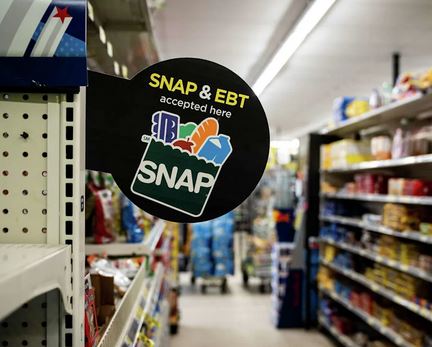Food banks across the country say they may be forced to scale back or even pause distributions to low-income households if the federal government shutdown stretches into a fourth week.
The shutdown, which started on a Monday and has already become one of the longest in U.S. history.

On average, SNAP benefits come out to about $187 per month per person, helping nearly 42 million Americans put food on the table.
If the stalemate continues, roughly one in eight people in the country could see their food support disrupted.
SNAP was a major federal investment in the last fiscal year, which ended in September 2024; it cost more than $100 billion as it provided essential food benefits to tens of millions nationwide.
A group of House lawmakers, Democratic senators, and several big-city mayors urged the Agriculture Secretary to dip into SNAP’s contingency reserves – estimated at around $5 billion – to keep benefits going in November.

Sen. Chris Murphy criticized President Donald Trump and Republican leaders for refusing to come to the negotiating table.
Speaking with CNN, Murphy argued that a deal could be reached “fairly quickly” if both sides were actually willing to talk, but right now, he said, they aren’t.
With the federal government at a standstill, some states are trying to fill the gap on their own.
New York and California have said they will be providing financial support for food banks, and Virginia declared a state of emergency on Thursday to cover November SNAP payments.

Other states are warning SNAP recipients to prepare for a potential loss of benefits.
In places like Oklahoma and Arkansas, residents who rely on food assistance are being advised to locate nearby food pantries and community organizations that might be able to help if their aid is cut off.
Rising grocery prices have pushed food banks to their limits, driving demand to unprecented levels.
In 2023 alone, more than 50 million Americans turned to food banks or local pantries for help, a huge jump from roughly 40 million in 2019.
The Facing Hunger Foodbank, which supports families across Ohio, Kentucky, and West Virginia, has had to tell visitors why certain staples, like bags of potatoes, are sometimes rationed due to limited supplies.








